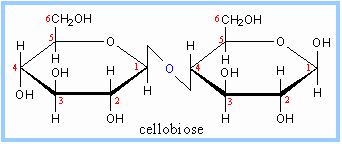Nucleic Acids
Nucleotide Structure: The following image from Wikipedia’s image gallery shows the basic structure of the nucleotide and the five nitrogenous bases.
The central component of all nucleotides will be a pentose sugar (5-carbon sugar). We will either see ribose or 2’deoxyribose as the sugar (the second carbon has one less oxygen than ribose). Off of the 5′ carbon of the sugar, you will find a phosphate group attached, while on the 1′ carbon, you will find a nitrogenous base. [NOTE: remember the numbering of carbon atoms in carbohydrates from yesterday? Do you see why the numbering is important?]
There are five nitrogenous bases, divided into two categories: Purines and Pyrimidines. Notice that the purines are a composite of two ring structures, while the pyrimidines are a single ring structure. When you take organic chemistry and biochemistry, the importance and complexity of these ring structures will be further discussed. At present, just become aware of their respective shapes and sizes (and the inclusion of nitrogen).
As with amino acids, the nucleotide contains a functional group: the nitrogenous base. Just like the side chain in an amino acid, the nitrogenous base will play an important part in the function of this biomolecule. The Sugar-Phosphate then becomes the backbone of the molecule (line the Amino-Chiral Carbon-Carboxyl of an amino acid). We will in later weeks that the sugar-phosphates of nucleotides will create the strands of DNA and RNA. The nitrogenous bases then playing an information role.
Base Complementarity:
The nucleic acids are referred to as informational biomolecules (biopolymers). This is because the sequence of nucleotides carries information on how to build RNA and Proteins. One of the central foundations of genetics (i.e., how it all works), is base complementarity. Here we are looking at the interactions between purines and pyrimidines:
A links with T through 2 hydrogen bonds.
G links with C through 3 hydrogen bonds.
A to T G to C
U has the binding properties of T, but is only found in RNA.
T is never found in RNA, only DNA.
NOTE: base complementarity is a critical concept to remember. All genetic processes rely on base complementarity!
Directionality
When we get to genetics, we will be talking about the directionality of the nucleic acids. For example, we will talk about DNA being built from the 5′ to 3′. This is in reference to the carbon atoms in the ribose or deoxyribose. The 5′ holds a phosphate, while the 3′ holds an open -OH (hydroxyl) group. This concept of directionality is critical, and you are warned to learn how it works, and what the terms represent.
As with all biopolymers, monomers are added together through dehydration synthesis, and separation is through hydrolysis. When synthesis occurs, the 5′ phosphate links to the 3′ -OH, forming a phosphodiester bond.
Daily Challenge
The challenge today is to understand the history of the discovery of DNA. Look up the following researchers and read about their discovery, how it was done, and the importance of the discovery. In addition, watch the TED Talk from James Watson “How we discovered DNA.” What are your impressions?




